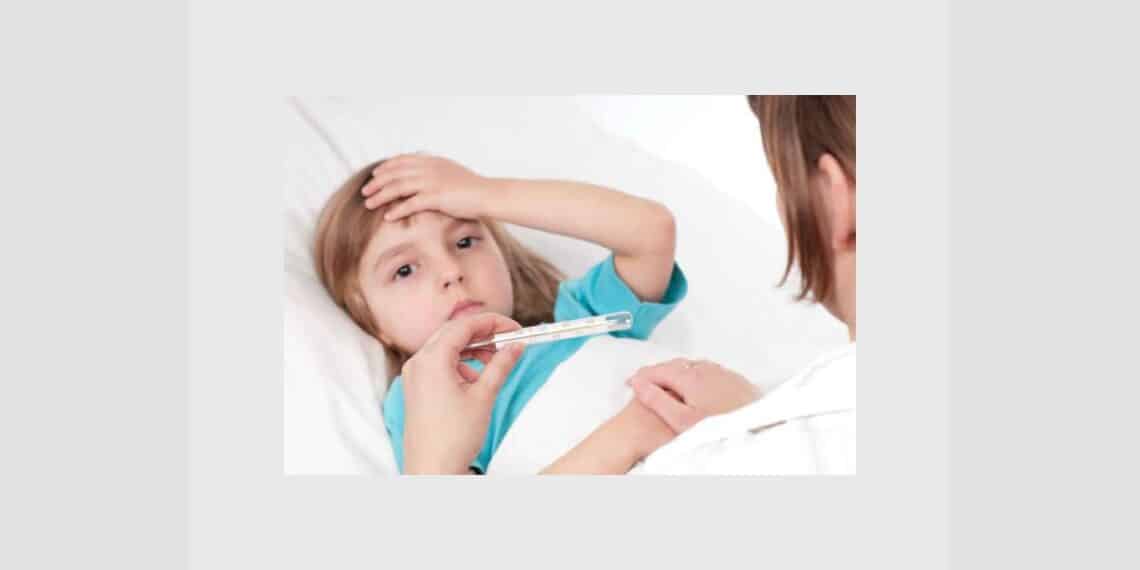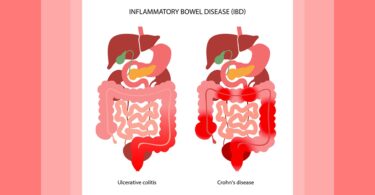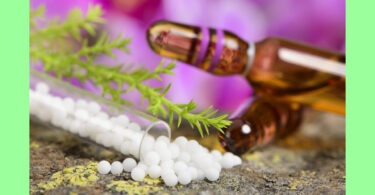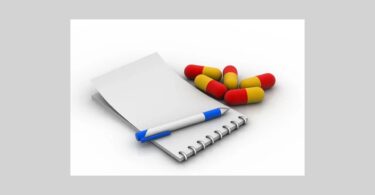Originally published in Homeopathy Today – Winter 2022 www.homeopathycenter.org . With permission from “Homeopathy Today”
The beauty of homeopathy is based on individualization. During my childhood in India, my mother used her vast knowledge of Ayurveda to treat my family’s ailments. When she needed additional help, she took us to our family homeopath, Dr. T. S. Saggu, a quiet, kind, and generous person with deep compassion for his patients.
Generally, a homeopath’s job involves taking a case (an initial interview when an individual describes the chief complaint as expressed in their body, mind, and spirit) and finding a remedy that addresses the totality of the individual’s symptoms.
I observed Dr. Saggu, my childhood hero and role model, doing this with few words, in little time, and with precise and stunning results. In a simple clinic filled with books and remedies, Dr. Saggu, in a gentle, almost whispering voice, would ask: What is your complaint? When and how did it start?
Where do you feel discomfort? What was happening at the time when the problem started? What makes it better and worse? What do you like to eat? Next, he checked vital signs and gave a physical exam. In under 20 minutes, Dr. Saggu completed the case intake, administered one dose of a homeopathic remedy, and gave simple instructions about taking the remedy at home. Then he moved on to the next person, almost always forgetting to charge a fee and only interested in healing his patients.
And oh, boy, did he heal! My five siblings and I always felt better after the remedies, never needing additional medications or treatments. We were hale and hearty, brimming with good energy because of our great childhood homeopath.
Inspired to learn
Inspired by Dr. Saggu, years later, I enrolled in the late Misha Norland’s School of Homeopathy, Devon, UK, and then completed post-graduate education with various other teachers. I learned that what I had observed with Dr. Saggu was pure classical homeopathy, as outlined in The Organon of Medicine1 by homeopathy’s founder, Dr. Samuel Hahnemann.
During Dr. Hahnemann’s life (1755-1843), homeopathy spread to every continent, and people routinely sought treatment from homeopathic clinics and hospitals. Although traditional Chinese medicine, Ayurveda, and other alternative medicine systems have gained wider acceptance, people continue to seek homeopathic care to support their health.
My education also helped me to realize that homeopathy, an amalgam of science and art, has room for innovation, experimentation, and creativity. Many innovators2, 3, 4, 5, 6, 7, 8, 9 have developed systems and methods for taking a case and finding a remedy.
Considering this, I wondered if “old style” classical homeopathy10 still worked and how effectively and efficiently in modern times. To find answers to these questions, I accepted an invitation from Dr. Gaurang Gaikwad to his Master Class in Classical Homeopathy, adding another exciting chapter to my homeopathy learning, https://www.drgauranggaikwad.com
Individual and unique
Dr. Gaurang meticulously avoids the trap of one-size-fits-all by paying close attention to the inherent uniqueness of each person. He teaches that time-tested remedies bring about deep, complete, and lasting relief when matched with a person’s symptoms.
In my coursework, Dr. Gaurang demonstrated case-taking techniques proposed by the master homeopaths of prior centuries11,12,13,14,15, and he “solved” the cases using standard classical homeopathy tools—repertories with lists of symptoms from over 5000 homeopathic remedies. Also, he chose remedies to match the totality of symptoms of a patient.
Dr. Gaurang stated, “The beauty of homeopathy is based on individualization. Simple remedies are chosen and prescribed, the patients experience relief from their distressing symptoms, and they also undergo changes in the level of their emotions, mind, and thoughts.
All these positive changes happen without dependency on the remedies or any side effects.” Dr. Gaurang has a favorite saying, “old is gold,” when he describes his experiences with classical homeopathy. The following two homeopathy cases taken by Dr. Gaurang in his clinic in India demonstrate his practice of classical homeopathy.
Samar leaves illness behind
Dr. Gaurang: At the peak of a COVID-19 wave in India, ten-year-old Samar’s* mother brought him to my clinic with fever and chills. Samar had previously tested positive for COVID. She described her son’s symptoms, “For the past week, Samar has had 102-degree (Fahrenheit) fever followed by chills.
The heat begins on his forehead and neck, and he is thirsty during the fever. Every three to four hours, the fever peaks, and then chills begin in the soles of his feet. The chills spread upward, and he shivers, gets weak, sleepy, and wants to lie down. Then he breaks into a sweat and is thirsty for cold water.
He does not like air drafts and feels better under a blanket. Samar is irritable, clingy, and terrified that robbers will kidnap him. The course of antibiotics he took last week has not helped.”
His mother added, “He is a perfectionist and loves to help the family.” She also said Samar usually enjoyed fruits, especially apples, and he had always been worse from cold air and sweaty on his face and neck during sleep.
Samar’s main complaint was fever and chills, which began in the soles and traveled upward, making him very sleepy with a desire for covering. Remedies for acute (short-term) illnesses cannot be prescribed based on a person’s general nature.
Treatment must be found quickly, without exploring the personality. In acute illnesses, practitioners should pay attention to new, strange, rare, and peculiar symptoms and what might have caused the illness. In contrast, finding a remedy for chronic disease relies on mental, emotional, and general symptoms, miasms, and historical conditions.
My approaches for finding acute or chronic remedies both originate from The Organon. To find a remedy for Samar, I repertorized his symptoms with the following rubrics:
- Chill, beginning in limbs and feet
- Chill, extending upward
- Uncovering aggravates
- Ascending symptoms
- Sleepiness
The top three remedies ranked by the repertorization were Gelsemium, Sulphur, and Pulsatilla. Gelsemium best matched Samar’s weakness, ascending chills starting in the feet, anticipatory fears about being kidnapped, and his alternating fever, chills, and thirst. If Samar had needed Sulphur or Pulsatilla, he likely would not have felt better under his blanket.
I instructed Samar’s mother to give him Gelsemium 30c every six hours and the tissue salt Ferrum phosphoricum 6X, a known help for reducing fever and inflammation. Within 24 hours, Samar’s fever was gone, and he was more energetic and awake. He continued to improve over the following week without relapse.
Ryan finds relief
Dr. Gaurang: Two-year-old Ryan* arrived in my office after recently testing positive for COVID. Ryan’s mother said, “Ryan is very dull, and his tongue looks different, red on the borders and white in the middle. He has had a terrible cold for the past three days with watery eyes and a wheezing cough. His fever begins during sleep, and his body gets hot, especially the palms and soles of his feet. During the fever, he is so weak and wants me to carry him. “
“Ryan repeatedly sneezes, acts irritably, and complains that his head hurts. He is cranky, says rude words, and throws things. Ryan drinks a lot of water and refuses to eat anything but salty snacks. I cannot leave him alone, even for a minute, because he is afraid.” His mother also mentioned that Ryan had a history of recurring respiratory infections.
Ryan’s symptoms pointed to several possible remedies:
- Cina matches the rude and irritable behavior.
- Gelsemium has characteristics of dullness with a fear of being alone.
- A person who needs Bryonia has an intense thirst and red edges on their tongue.
- Tuberculinum can help with a wheezing cough, a history of infections, and the tendency to throw things.
Ocimum sanctum, a remedy derived from the holy basil plant, matched all of Ryan’s symptoms, combining the characteristics of Cina, Gelsemium, Bryonia, and Tuberculinum. I asked Ryan’s mother to give him Ocimum sanctum 30c every four hours.
By the next day, Ryan’s fever, dull and irritable behavior, weakness, and headache were gone, and he required no further treatment. [For more information about using remedies to address fever in children, see Childhood Fever Remedies on page X.]
Revisiting “old-style” classical homeopathy with Dr. Gaurang brought me full circle. Like my childhood homeopath, I gently support patients with classical homeopathy. Classical homeopathy is dynamic and timeless and has never been out of style in the past 200-plus years, and it is getting better and better with age…reminding me of the saying “Old is gold”.
Here is a list of tried and true remedies often indicated in childhood fevers:
Childhood Fever Remedies
.Aconite – sudden onset with emotional excitement, restlessness, and anxiousness; dry mouth with strong thirst; dry throat with cough; hot skin better being uncovered
Belladonna – sudden onset; hot head and face with cold hands and feet; throbbing pulse points; burning hot, red skin that radiates heat; thirsty with dry throat and mouth; feels worse when body is uncovered; intensely fearful
Bryonia – slow onset of fever; one-sided fever and chills, often on right side; very thirsty; feels worse moving around and better being still; irritable, better being alone
Chamomilla – angry before fever; hot face, one cheek red, the other white; fever felt on front of body, chills felt on back of body; very thirsty during fever; chills get worse when body is uncovered; hot sweat on face and head; bad tempered, wants to be carried; feels better when fasting; asks for things, but when given, throws them away in anger
Cina – daily fever at the same hour; fever caused by sweets, pastries, expired canned food, worms; cold sweat and ravenous hunger with chills, vomits food; convulsions follow chills, better after eating; very angry and demands to be vigorously rocked up and down; whiteness around mouth
Ferrum phosphoricum tissue salt – onset not as sudden as Belladonna; isolated body parts feel hot; desire to stretch during chills; weak but not as dull as Gelsemium; bright red discharges; talkative during fever
Gelsemium – fever begins in the head and neck; chills start in the soles of feet and move upward; thirsty for cold water during fever and chills; sleepy and weak during chills; fears from anticipation
Nux vomica – fever and chills alternate; no thirst during fever; violent shaking during chills, chilly legs and back; profuse sweat after chills; feels better being covered during fever, chills, and perspiration; person knows when fever is about to begin
Lycopodium – difficult to manage when ill; clingy and abusive to parents, especially on waking; sour vomiting between fever and chills; nose blocked at night, mouth breather; frequent illnesses
Ocimum sanctum – fever with hot palms and soles of feet; fever during sleep; thirsty and craves salty food; fever with sneezing, watery eyes, and cough; irritable, rude, and afraid to be alone
Pulsatilla – changeable fever and chill symptoms; feels better moving around in open air and being uncovered; chills move up and down body; no thirst during fever, thirsty with chills; weepy and wants to be held during fever
Sambucus – fever during sleep, wakes up fine; dry, burning heat; dry cough; nose is blocked; may have a history of a big fright
Sulphur – fever with long-lasting heat; burning soles of feet during fever; chills move upward; thirsty for cold drinks during fever; feels better uncovering body; helpful after a prolonged fever that has not responded to treatment
References
- Hahnemann, S. Organon of medicine, 6th edition. Translated by Boericke, W. B Jain publishers, India, 1921, reprint 2004.
- Sankaran, R. Homeopathy for today’s world: Discovering your animal, mineral, or plant nature. Healing Arts Press, Vermont, USA, 2011.
- Music and healing. Yoga magazine, issue 226, February 2022, pg 56-59.
- https://hpathy.com/homeopathy-interviews/dr-divya-chhabra-interviewed-by-vatsala-sperling/
- https://hpathy.com/homeopathy-interviews/interrview-dinesh-chauhan/
- https://hpathy.com/homeopathy-interviews/bhavisha-sachindra-joshi/
- https://hpathy.com/homeopathy-interviews/dr-michal-yakir-is-interviewed-by-vatsala-sperling/
- Banerji, P and Banerji P. The Banerji protocols: A new method of treatment with homeopathic medicines. Generic publishers, India, 2018.
- Scholten, J. Homeopathy and the elements. Homeopathic Education Services, 1st edition, 2007.
- Vithoulkas, G the science of Homeopathy. Grove Weidenfeld publishers, 1980.
- Boericke, W. Pocket manual of homeopathic materia medica and repertory. 9th edition, reprint 2005. B Jain Publishers, India.
- Kent, J. T. Lectures on homeopathic materia medica. Reprint 2004, B Jain Publishers, India.
- Roberts H.A. The principles and art of cure by homeopathy. 3rd edition, 2005. B Jain Publishers, India.
- Tyler, M.L. Homeopathic drug pictures. 2nd edition, reprint 2004. B. Jain Publishers, India.
- Clarke, J.H. Dictionary of practical materia medica, vol 1,2 and 3. Reprint 2007, B. Jain publishers, India.






